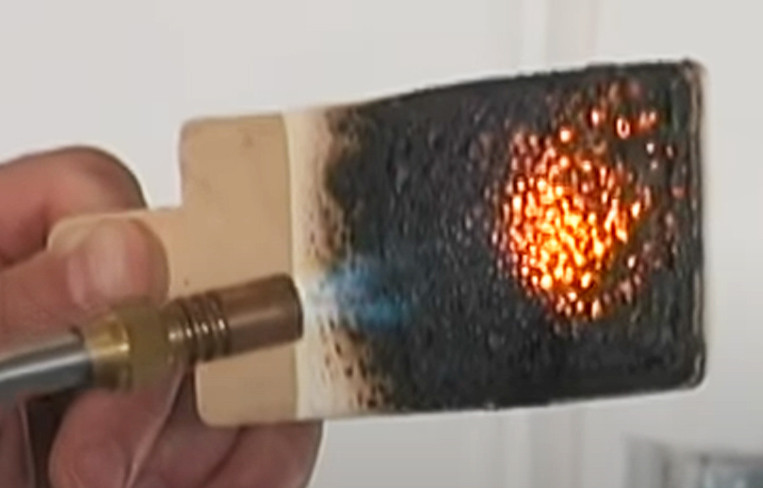Fire Retardant Facts: Intumescent vs Non-Intumescent
There are basically two types of fire retardant - intumescents and non-intumescents. Here's the simple explanation.
Intumescents swell up when exposed to heat. Non-intumescents don't.
More complex explanation.
When exposed to flame or heat above around 325°F, intumescent coatings swell up and form a thick layer of char. The heat causes a chemical reaction that generates gas that fills tiny little pockets in the coating - almost like foam. That foam insulates and protects the substrate from the effects of the extreme heat. A very thin coating that goes on at 40 mils thickness can expand to an inch thick or more, depending on the heat source. After the fire, that expanded foam can be scraped off, the substrate (steel, wood, etc) cleaned up, and the FR coating re-applied. These are usually the most effective of the retardants, and that's why they are used on structural steel, wood framing, thatch, and assemblies, etc. They are used when 1, 2 or 3 hour time ratings are required.
Non-intumescents don't swell up, but can work in a couple different ways. Normally, these are saturants that are watery and soak into the wood. When exposed to high heat, they actually increase the charring level of the wood, but they simultaneously release water vapor. This keeps the wood from supporting flame, so the fire does not continue to creep up the wood. It 'self-extinguishes,' or puts itself out when the flame source is removed. These are most often used when a Class A or B rating is required per ASTM E84, or also on fabrics (NFPA 701) and other absorbent materials. There are a few non-intumescent saturants that meet the 1 hour time rating per ASTM E119 for floor/ceiling assemblies.
The other type of non-intumescent would be a paint. Instead of expanding, it undergoes a chemical transformation and creates something like a hard candy shell. It makes it more difficult for the flame to break through the paint layer and get to the substrate. It also dissipates the heat throughout the layer of paint. These are often sold as paint additives. They work fine, usually meeting Class A ratings per ASTM E84, where a time rating is not required.
Here are a few examples of each
Intumescents:
- Contego HS for Steel
- FPCC for Plastic
- DC315 for Spray Foam Insulation (SPF)
- FF88 for Floor/Ceiling Assemblies
Non-Intumescents:
Recent Posts
-
How to Stop Wildfires
Wildfires pose a significant threat to both human life and the environment, causing extensive damage …Jul 10th 2024 -
How Often Do Wildfires Occur
Wildfires are a natural phenomenon that have shaped landscapes for millions of years. However, in re …Jul 10th 2024 -
Where Do Wildfires Occur?
Wildfires, powerful and often destructive natural events, occur worldwide, fueled by various factors …Jul 10th 2024




